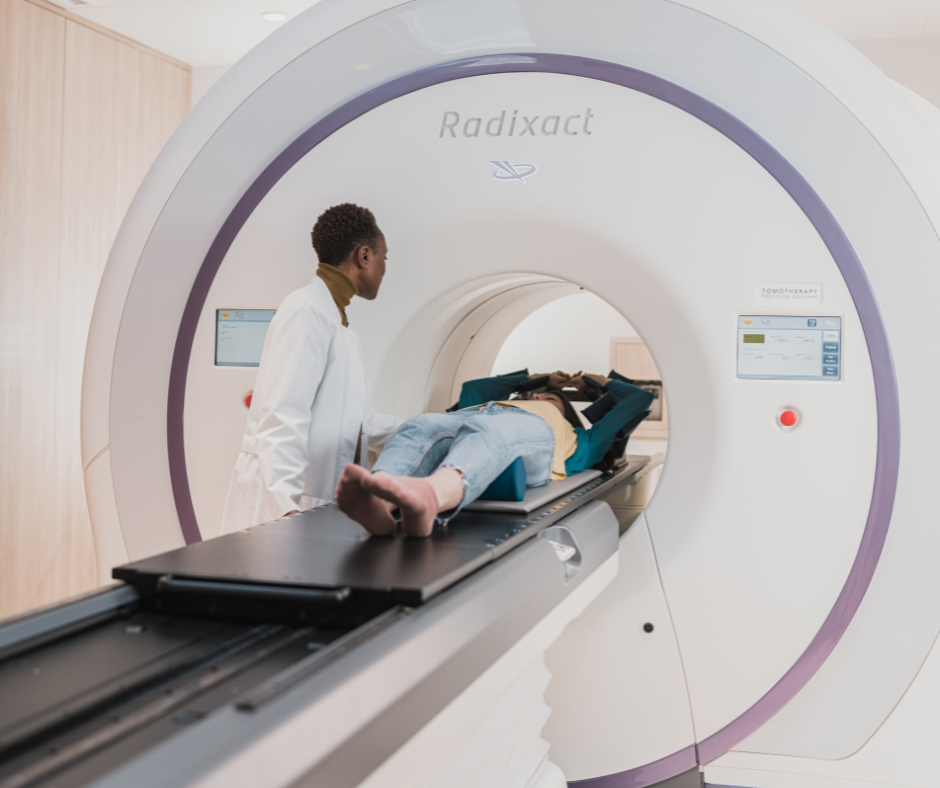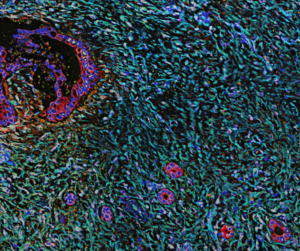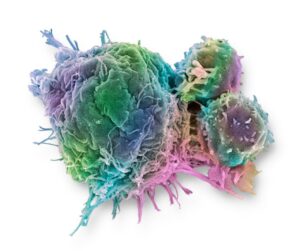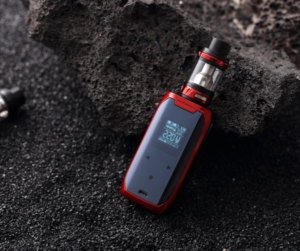Taylor A. Aldridge, MMS, PA-C
Pancreatic ductal adenocarcinoma (PDAC) is a notoriously aggressive gastrointestinal malignancy with an overall 5-year survival rate of 5%.1 This grim prognosis is primarily due to the late stage of the disease at diagnosis, which unfortunately is often the time when patients become symptomatic. At diagnosis, patients are stratified among a continuum of surgical feasibility from resectable, borderline resectable, and locally advanced to metastatic pancreas cancer, the last of which is not considered to be surgically resectable. The distribution of cases is approximately 15% to 20% upfront resectable, 30% to 40% borderline resectable or locally advanced, and 30% to 40% metastatic. This classification system identifies patients who may be future surgical candidates and helps providers and patients balance treatment goals with potential chemotherapy toxicities and risks of surgery, especially given that pancreatic resection remains a significantly morbid operation. A Whipple pancreaticoduodenectomy has a perioperative morbidity of 30% to 40% and less than 3% mortality.2,3 Other surgical options exist depending on tumor location including distal pancreatectomy, total pancreatectomy, and modified Appleby. For this review, we will focus on tumors in the head of the pancreas.
A multimodal approach is generally used to treat PDAC including chemotherapy, radiation therapy, surgery, and possibly irreversible electroporation (IRE); however, surgical resection remains at the core of treatment as it is the only option that has curative potential. Unfortunately, only 20% of patients diagnosed with PDAC ever make it to surgery. In this minority group with localized disease who undergo an R0 (margin negative) resection, the 5-year survival rate is substantially higher 18% to 24%.4
While the role of surgical resection has been established in upfront resectable and metastatic pancreatic cancers, there remains a lack of consensus data on how to manage the 30% to 40% of cases that account for borderline resectable pancreatic cancer (BRPC) and locally advanced pancreatic cancer (LAPC).
In brief, let’s review the imaging characteristics that constitute BRPC and LAPC and why identifying these patients and treating them with optimal neoadjuvant therapy is important.
Staging assessment of PDAC typically includes a multiphasic pancreas protocol CT of the chest, abdomen, and pelvis (thin axial sections with pancreatic and portal venous phases of contrast enhancement) that localizes the tumor, rules out metastasis, and evaluates vascular involvement. BRPC and LAPC are characterized by varying degrees of local vascular involvement and the potential ability for reconstruction. The critical vascular structures evaluated are the celiac artery (CA), superior mesenteric artery (SMA), common hepatic artery (CHA), superior mesenteric vein (SMV), and portal vein (PV).
While variation exists between institutions, most define BRPC as PV or SMV abutment or encasement (<180° vs >180° of vascular involvement) that can be resected or reconstructed; some groups also include abutment only of the CHA or SMA (Table). Locally advanced pancreatic cancer has a more standardized definition. The American Hepatopancreatobiliary Association (AHPBA), MD Anderson Cancer Center, and the National Comprehensive Cancer Network (NCCN) agree that SMV/PV encasement without reconstruction options, involvement of the celiac axis, and SMA encasement without reconstruction options all constitute LAPC (Table).5
Table. Definitions of Borderline Resectable and Locally Advanced Pancreatic Cancer.5
| Americas Hepato-Pancreato-Biliary Association/Society of Surgical Oncology/Society for Surgery of Alimentary Tract6 | MD Anderson Cancer Center7 | National Comprehensive Cancer Network8 | |
| Borderline Resectable | Encase or abut SMV/PV Abut SMA, including encasement of either a short segment of the gastroduodenal artery or up to the hepatic artery | Encase the SMV/PV | Encase (>180-degree involvement) or abut (<180-degree involvement) the SMV/PV confluence Contact with IVC Abut SMA, without common hepatic artery involvement |
| Locally Advanced | Any SMV/PV involvement not amenable to reconstruction or major venous thrombosis CHA involvement not amenable to reconstruction Encase the SMA Any involvement of the celiac artery | Involve the celiac artery Encase the SMA and have CHA involvement that is not amenable to reconstruction | SMV/PV involvement not amenable to reconstruction Encase the celiac artery or SMA Any degree of contact with aorta Any degree of contact with the CHA Extension to celiac axis or hepatic bifurcation |
CHA, common hepatic artery; IVC, inferior vena cava; SMV/PV, superior mesenteric vein/portal vein.
Adapted from Sulciner, M. L., Ashley, S. W., & Molina, G. (2022). Advances and Remaining Challenges in the Treatment for Borderline Resectable and Locally Advanced Pancreatic Ductal Adenocarcinoma. J Clin Med, 11(16). © 2022 by the authors. Licensee MDPI, Basel, Switzerland. This article is an open-access article distributed under the terms and conditions of the Creative Commons Attribution (CC BY) license.
There isn’t a universally agreed upon classification for BRPC and LAPC as the degree of vascular involvement that is considered possible to safely reconstruct with tolerable morbidity varies between institutions. While venous reconstruction is currently standard treatment, arterial reconstruction remains heavily debated but is being performed at high-volume centers. Pooled analysis of 19 studies in a meta-analysis by Malczak et al published in 2020 reported a significant increase in mortality related to arterial reconstructions, 11.3% vs 3.6% in standard procedures.9 There was also an increased postoperative bleeding risk, though no increased risk of pancreatic or biliary fistula was identified. There was a 1.4 times greater risk of a non-R0 resection with arterial reconstruction.10
In borderline resectable and locally advanced PDAC patients, the rationale for neoadjuvant therapy is to downstage the tumor and test tumor biology. Downstaging improves the chance of tumor resectability with an R0 margin, which is a positive prognostic marker for overall survival (OS).11-12 In fact, Michelakos et al found that disease-free survival (DFS) and OS were significantly better for BRPC/LAPC patients treated with neoadjuvant 5-fluorouracil with leucovorin, irinotecan, and oxaliplatin (FOLFIRINOX) compared with upfront resected patients (DFS 29.1 vs 13.7 months, P<0.001; OS 37.7 vs 25.1 months from diagnosis, P=0.01).13 While much progress has been made in identifying and treating BRPC and LAPC, the goal remains to increase the number of patients who will ultimately achieve curative benefit from surgery.

References
- Bengtsson, A., Andersson, R., & Ansari, D. (2020). The actual 5-year survivors of pancreatic ductal adenocarcinoma based on real-world data. Sci Rep, 10(1), 16425.
- Kneuertz, P. J., Pitt, H. A., Bilimoria, K. Y., Smiley, J. P., Cohen, M. E., Ko, C. Y., & Pawlik, T. M. (2012). Risk of morbidity and mortality following hepato-pancreato-biliary surgery. J Gastrointest Surg, 16(9), 1727-1735.
- Yeo, C. J., Cameron, J. L., Sohn, T. A., Lillemoe, K. D., Pitt, H. A., Talamini, M. A., Hruban, R. H., Ord, S. E., Sauter, P. K., Coleman, J., Zahurak, M. L., Grochow, L. B., & Abrams, R. A. (1997). Six hundred fifty consecutive pancreaticoduodenectomies in the 1990s: pathology, complications, and outcomes. Ann Surg, 226(3), 248-257; discussion 257-260.
- Katz, M. H., Wang, H., Fleming, J. B., Sun, C. C., Hwang, R. F., Wolff, R. A., Varadhachary, G., Abbruzzese, J. L., Crane, C. H., Krishnan, S., Vauthey, J. N., Abdalla, E. K., Lee, J. E., Pisters, P. W., & Evans, D. B. (2009). Long-term survival after multidisciplinary management of resected pancreatic adenocarcinoma. Ann Surg Oncol, 16(4), 836-847.
- Sulciner, M. L., Ashley, S. W., & Molina, G. (2022). Advances and Remaining Challenges in the Treatment for Borderline Resectable and Locally Advanced Pancreatic Ductal Adenocarcinoma. J Clin Med, 11(16).
- Callery, M. P., Chang, K. J., Fishman, E. K., Talamonti, M. S., William Traverso, L., & Linehan, D. C. (2009). Pretreatment assessment of resectable and borderline resectable pancreatic cancer: expert consensus statement. Ann Surg Oncol, 16(7), 1727-1733.
- Katz, M. H., Pisters, P. W., Evans, D. B., Sun, C. C., Lee, J. E., Fleming, J. B., Vauthey, J. N., Abdalla, E. K., Crane, C. H., Wolff, R. A., Varadhachary, G. R., & Hwang, R. F. (2008). Borderline resectable pancreatic cancer: the importance of this emerging stage of disease. J Am Coll Surg, 206(5), 833-846; discussion 846-838.
- Tempero, M. A., Malafa, M. P., Al-Hawary, M., Behrman, S. W., Benson, A. B., Cardin, D. B., Chiorean, E. G., Chung, V., Czito, B., Del Chiaro, M., Dillhoff, M., Donahue, T. R., Dotan, E., Ferrone, C. R., Fountzilas, C., Hardacre, J., Hawkins, W. G., Klute, K., Ko, A. H., . . . George, G. V. (2021). Pancreatic Adenocarcinoma, Version 2.2021, NCCN Clinical Practice Guidelines in Oncology. Journal of the National Comprehensive Cancer Network, 19(4), 439-457.
- Malczak, P., Sierzega, M., Stefura, T., Kacprzyk, A., Dros, J., Skomarovska, O., Krzysztofik, M., Major, P., & Pedziwiatr, M. (2020). Arterial resections in pancreatic cancer – Systematic review and meta-analysis. HPB (Oxford), 22(7), 961-968.
- Jablonska, B., Krol, R., & Mrowiec, S. (2022). Vascular Resection in Pancreatectomy-Is It Safe and Useful for Patients with Advanced Pancreatic Cancer? Cancers (Basel), 14(5).
- Crippa, S., Giannone, F., Schiavo Lena, M., Belfiori, G., Partelli, S., Tamburrino, D., Delpini, R., Pagnanelli, M., Pecorelli, N., Balzano, G., Doglioni, C., & Falconi, M. (2021). R Status is a Relevant Prognostic Factor for Recurrence and Survival After Pancreatic Head Resection for Ductal Adenocarcinoma. Ann Surg Oncol, 28(8), 4602-4612.
- Kaufmann, B., Hartmann, D., D’Haese, J. G., Stupakov, P., Radenkovic, D., Gloor, B., & Friess, H. (2019). Neoadjuvant Treatment for Borderline Resectable Pancreatic Ductal Adenocarcinoma. Dig Surg, 36(6), 455-461.
- Michelakos, T., Pergolini, I., Castillo, C. F., Honselmann, K. C., Cai, L., Deshpande, V., Wo, J. Y., Ryan, D. P., Allen, J. N., Blaszkowsky, L. S., Clark, J. W., Murphy, J. E., Nipp, R. D., Parikh, A., Qadan, M., Warshaw, A. L., Hong, T. S., Lillemoe, K. D., & Ferrone, C. R. (2019). Predictors of Resectability and Survival in Patients With Borderline and Locally Advanced Pancreatic Cancer who Underwent Neoadjuvant Treatment With FOLFIRINOX. Ann Surg, 269(4), 733-740.







